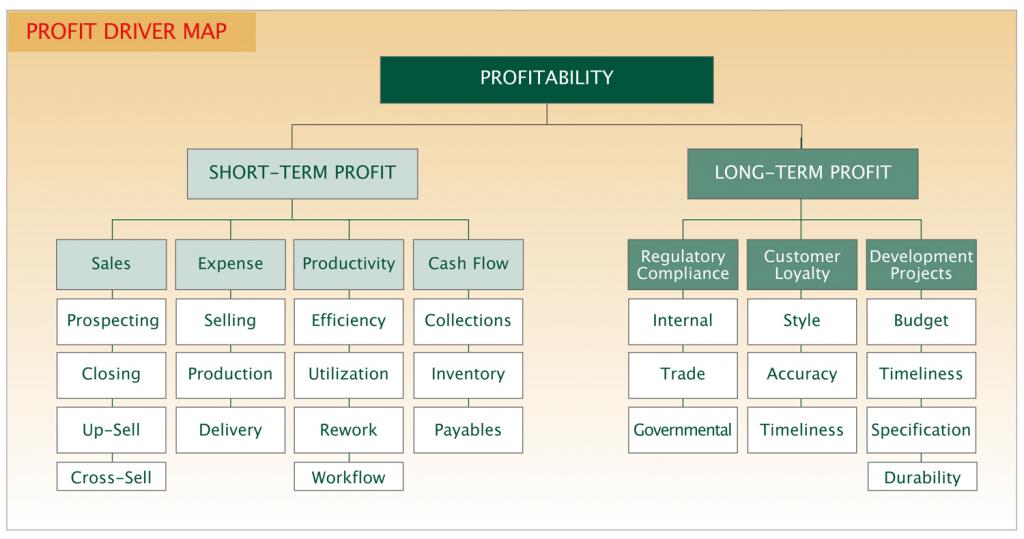Communication, Engagement, and Leveraging Profit Drivers
Employee engagement is a term used to describe an employee who is fully involved in the organization and dedicated to furthering the organization’s interests—someone who is self-motivated, dedicated, and passionate about his or her job and company, someone who strives to consistently perform at levels above the norm, someone who feels connected to the company’s success and to the results he or she achieves.
Creating an environment where employees are motivated, not only to reach goals but also to continually seek ways to improve work methods and processes, starts with the very basic concepts of communication and feedback.
The value in each employee is a highly regarded principle and, although well-intended, it is often viewed simply as lip service if it is described without establishing the connection between employee behaviors and how they affect business sustainability. Even the most well intended organizations fail to treat employees as business partners whose contributions are acknowledged and valued. Employees are not necessarily aware of profit and loss, they are not aware of how their specific actions impact the current state of the business and, frankly, leaders do not look closely enough to be able to define just how Ms. James in Department 101 actually contributes to the success of the team, the department, and the company in a tangible and concrete way. Defining specific outcomes and how they are linked to the successes of the day, the week, and the year is a step too few companies take.
“But my employees already know what they’re supposed to be doing day in and day out,” you might think. However, even though the day-to-day job responsibilities may have been explained to the employee when they were hired and they consistently perform assigned daily tasks, they may not have made the connection between the employee’s behaviors and the company’s success. One must ask: Can they make the connection of, “If I do ‘x,’ I can help the company succeed?"
 Chances are that the connection isn’t made or made clear enough from the start, nor is it discovered through the years of experience an employee gains at his or her company. If expectations aren’t set forth and desired behaviors are not positively reinforced, then the employee will most likely persist at a level of minimum performance, which allows them to avoid any sort of negative consequence.
Chances are that the connection isn’t made or made clear enough from the start, nor is it discovered through the years of experience an employee gains at his or her company. If expectations aren’t set forth and desired behaviors are not positively reinforced, then the employee will most likely persist at a level of minimum performance, which allows them to avoid any sort of negative consequence.
So how do we use communication to establish this necessary connection between behavior and results? An analysis was conducted of ADI’s clients who implemented performance measurement and profit-indexed performance pay. Over 12,000 performance measures were analyzed, and we found we could identify seven unique measurement categories that pertain to every type of organization. These measurement categories, termed “profit-drivers,” are the key to establishing the foundation of how a company communicates its strategy to its employees at every level within the organization.
Profit Drivers
Designing a balanced performance matrix comprised of results-focused, objective measures allows both the employee and the manager to engage in feedback sessions that specifically target the areas that affect the company’s success. This is accomplished by designing matrices using the profit drivers and the method of cascading objectives. The process starts by designing the organization’s scorecard, which we term the “strategic scorecard.” By first identifying which of the profit-driver measurement areas are critical to the organization’s success, we can then use it as a roadmap to complete the design for the rest of the company. At each level we assess how the division, the department, and the team affect the results at the higher levels by pinpointing the specific outcomes for each job position.
To make this system work, each person at every level in the organization must have a role in communicating what is happening; how it affects individual, team, and company performance; and understanding the network of interactive behaviors that lead to success. By establishing this chain of communication, employees can broaden the look beyond “my job.” Empowered employees understand that what they do, suggest, and change can impact themselves and also their colleagues and the company.
The Informed and Engaged Employee
Consistently taking advantage of the opportunities to communicate how specific behaviors affect employee performance on the performance matrix and how well the company is doing will help reinforce the employees’ understanding of how they impact results. Making this connection is essential when talking about employee engagement. Establishing this critical connection leads to employees who know that they are making a difference within the company. Knowing that what they do on a daily basis really matters to others helps employees to strive not only to meet and exceed their goals, but also to work with team members and management to improve work methods and processes. Employees have a stake in the outcomes of the company and the company has a clear stake in each employee’s success.



